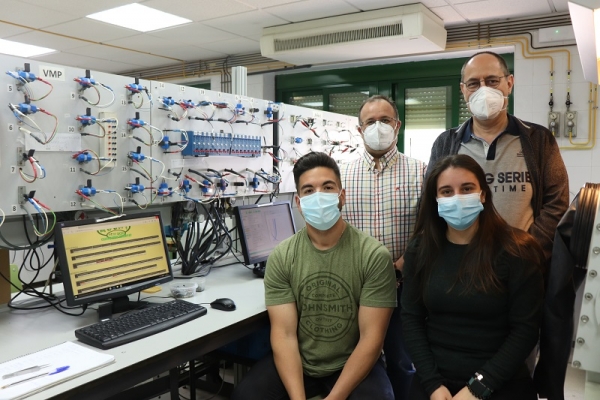Since the 1990s lithium-ion (Li-ion) batteries have dominated the market to power electronic devices. However, this material is saddled with some problems, such as its scarcity and geographical concentration, mainly found in areas of Latin America and Asia. In fact, it is estimated that the mines from which lithium can be obtained are not currently sufficient to meet the foreseeable future demand generated by the rise of electric vehicles, such that "if we wanted to replace gasoline and diesel vehicles with ones powered by lithium-ion batteries, tomorrow, we wouldn't have enough", stated UCO researcher Carlos Pérez-Vicente.
Faced with these disadvantages, the scientific community is looking for alternatives to lithium, such as sodium, calcium, aluminum and magnesium. Along this line, the FQM288 research group at the UCO has published an article in the journal Energy Storage Materials in which they report their findings regarding the viability of magnesium batteries using a new compound (a magnesium and manganese oxide) as a cathode under very specific conditions (with the cations occupying controlled positions in octahedral and tetrahedral voids).
All batteries are composed of 3 elements: an anode, a cathode and an electrolyte, with their relationship producing the chemical reaction that releases usable energy. In this study, magnesium metal was used as an anode (the negative pole of the battery). This material boasts some advantages over lithium: being metallic, it has a greater capacity than the current anodes of Li-ion batteries, and it does not produce dendrites (deposits that affect the batteries' safety, causing them to short-circuit), something that did occur with lithium metal batteries.
While magnesium metal can double batteries' capacity, producing the reaction is more difficult. Therefore, as Gregorio Ortiz, a researcher at the UCO, stated: "not just any material can work with magnesium; there must be theoretical and experimental preliminary studies that lead to success." Thus, it is necessary to combine the magnesium metal with a suitable cathode (the battery's positive pole). The material they used as a cathode in the study is a magnesium manganese oxide,Mg2MnO4, which is presented in a stable structure.
This compound gives rise to the reduction and oxidation (redox) process through which the energy of the batteries is generated. In this process the metal of the cathode (manganese) is reduced and gives up electrons to the metal of the anode (magnesium), which receives them and oxidizes. The ion transfer is carried out through the electrolyte, the third component of the battery, which joins the anode and the cathode. In the study carried out a non-aqueous electrolyte was used that makes it possible to work with higher voltages.
The study, which is part of a research project that began in 2018 and brings together the University of Cordoba, the University of Xiamen, and the Bulgarian Academy of Sciences, mixes theoretical calculations with an experimental component where techniques such as x-ray diffraction, electronic paramagnetic resonance, electron microscopy and photoelectron spectroscopy have been used. For the achievement of these scientific advances interaction with scientists in China, and Professor Ortiz's leadership, have been fundamental. They have verified that magnesium batteries with the manganese compound increased their capacities up to 3.1 volts, which means that their energy density, at the laboratory scale, is 335 Wh/kg, representing 60% of lithium-ion batteries' energy density. This is a breakthrough, as in previous studies a maximum of 2.2 volts was never exceeded. However, they also found that in charging and discharging cycles the batteries saw their initial capacity cut in half. As Ortiz argues, "with new scientific strategies, the initial capacity might be recovered."
The results obtained by the study are promising, suggesting that the existence of batteries complementing lithium ones is possible. However, this formula has only been tested at the laboratory level, so we will have to wait to see how it performs on a real scale, which would require industry to invest money in the development of these batteries.
Reference:
Rafaela Ruiz, Carlos Pérez-Vicente, Saúl Rubio, Radostina Stoyanova, WenhuaZuo, Yong Yang and Gregorio F. Ortiz, “A Cubic Mg2MnO4 Cathode for non-aqueous Magnesium Batteries”, Energy Storage Materials, Vol. 48, June 2022, pp. 12-19, https://doi.org/10.1016/j.ensm.2022.02.047.


